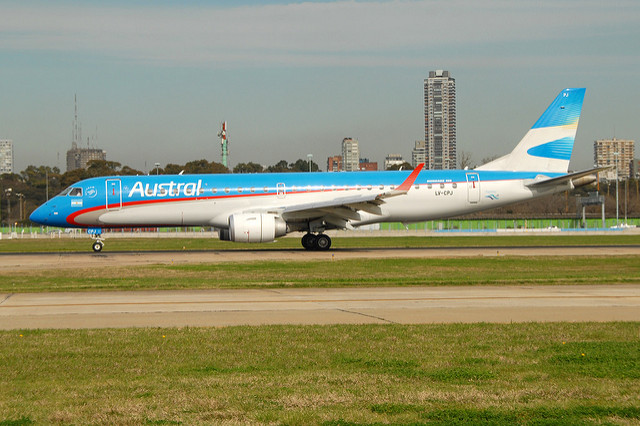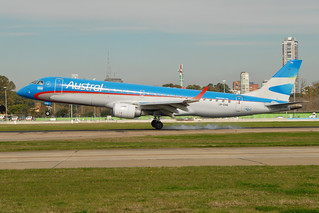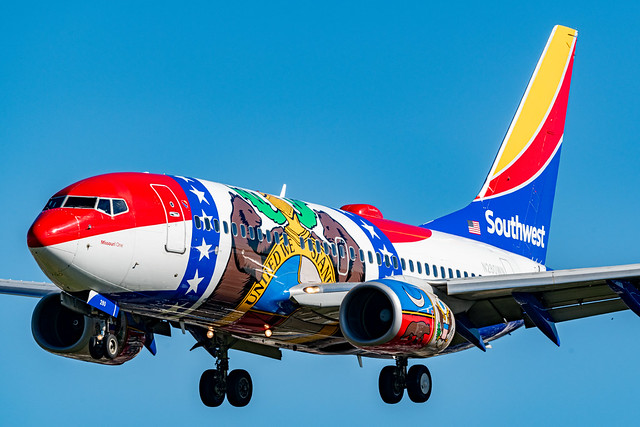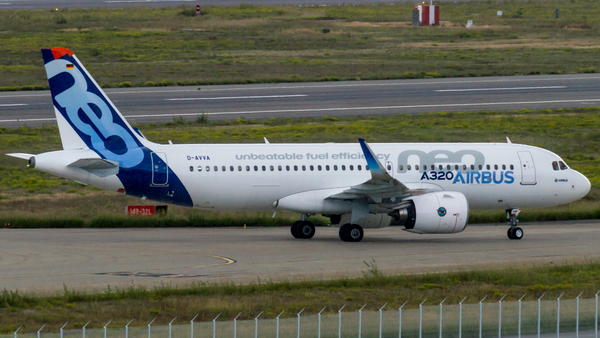Austral E190 at Buenos Aires on Nov 15th 2013, overran runway on landing
Last Update: December 2, 2015 / 19:14:18 GMT/Zulu time
Incident Facts
Date of incident
Nov 15, 2013
Classification
Incident
Airline
Austral Airlines
Aircraft Registration
LV-CKZ
Aircraft Type
Embraer ERJ-190
ICAO Type Designator
E190
Airport ICAO Code
SAEZ
During the landing phase the aircraft overran the end of the runway and impacted the ILS antenna due to a significant change in the weather conditions in a very short period of time during the most critical phase of the landing. The crew remained unaware of the weather change due to ATC not updating the weather information.
The following factors contributed to the runway excursion:
- a tail wind component of 27 knots above the limits set by the aircraft manufacturer (15 knots on dry runway), rain, reduced visibility and a runway contaminated with water
- ATC did not update the crew on the significant and sudden change of weather, the crew thus remained unaware of the weather conditions
- Ezeiza Airport's Tower did not have an alerting system available to warn of sudden wind changes and changing runway conditions
- the approach destabilized in the transition from disconnecting autopilot to continuing visually
- monitoring and callouts by the pilot monitoring were not in compliance with standard operating procedures
- the crew did not consider a missed approach in a situation of non-stabilized approach during a visual approach with autopilot disconnected
- a long landing combined with the tail wind and the wet runway meant, that it was not possible to stop the aircraft within the runway distance remaining
- the aircraft was not correctly configured for a landing on a contaminated runway, the actual configuration did not match the standard operating procedures for the runway condition present at touch down
The JIAAC reported the first officer (53, ATPL, 5,200 hours total, 606 hours on type) was pilot flying, the captain (39, ATPL, 7,150 hours total, 1,690 hours on type) was pilot monitoring.
The aircraft had deviated around weather in the area near Montevideo, which was also planned as an alternate. The weather information for Ezeiza read visibility 9km, calm winds and rain, upon receiving this weather information the crew decided to continue to Ezeiza. The aircraft joined the instrument approach #2, VOR DME ILS DME approach to runway 11. Establish on final approach, about 4nm from touch down, the crew received landing clearance, wind was reported by tower at 4 knots from 240 degrees.
In the two following minutes, until touch down, the weather changed significantly however, according to special weather report one minutes after the runway excursion the winds had increased to 20 knots gusting 34 knots from 250 degrees, the rain increased in intensity and consequent reduction of visibility. Tower however did not transmit the changing weather conditions to the crew.
The aircraft touched down on runway but was unable to stop before the end of the runway, overran the end of the runway and impacted the localizer antenna about 250 meters past the end of the runway. The aircraft was evacuated through the rear doors at both sides, there were no injuries.
The aircraft sustained substantial damage to the radome and lower part of the fuselage, three pitot tubes and two temperature sensors mainly through impact with the localizer antenna, the nose gear received damage to the doors. The localizer antenna received substantial damage, too.
The JIAAC analysed that there was no technical malfunction prior to the accident.
METARs as well as ATC weather information indicated near calm winds, light rain, visibility of 9000 meters with a cloud ceiling at 7000 feet. Based on that information the crew acted according to their training in planning their approach and landing, there was no hint suggesting that special measures would become necessary.
4nm before touchdown the crew received landing clearance with wind information of 4 knots from 240 degrees. However, in the following two minutes until touchdown the weather changed to an "extreme magnitude" with winds at 20 knots gusting 34 knots from 250 degrees, resulting in a 27 knots tailwind component. Even if the runway had been dry this would have exceeded the tail wind limit of 15 knots. In addition the visibility reduced significantly. There is no evidence that the crew recognized the worsened weather conditions in their night visual approach.
The JIAAC continued analysis stating that the standard operating procedures of the airline required a maximum performance landing configuration for landing on contaminated runways recommending full flaps. The crew however had correctly configured the aircraft to flaps 5 according to the weather information they had received earlier, which now no longer was correct due to the changed weather conditions.
The flight crew's use of automation was according to standard operating procedures based on the reported weather conditions. The approach was stable until the autopilot was disconnected, during the visual transition the flight path was corrected to above the glide path. With the pilot flying focussing on acquiring visual references the deviation above glide path is consistent with increasing tailwind, the parameters of flight control increasingly deteriorated. The JIAAC wrote: "The variations in the parameters of flight control suggest a degree of difficulty in controlling the aircraft consistent with the unexpected operating conditions."
During the transition to visual flight there is further evidence of deteriorating monitoring of the flight progress. The JIAAC wrote: "This is not outrageous considering the sudden increase in workload for the crew, without time to adjust, to manage substantially different conditions than planned. The sudden increase in workload is to be considered a contributing factor to the deterioration of the flight path."
The JIAAC further analysed that the handling of the aircraft by the first officer in manual flight, with autothrottle connected, resulted in frequent pitch changes of up to 5 degrees causing a large response by the autothrust system, substantial speed variations and further aggravated pitch change requirements, overall leading to destabilization of the approach.
The JIAAC analysed that both flight data and cockpit voice recorder made clear that the approach was not stabilized. However, neither pilot called for a missed approach. A realistic assessment of the decision to continue the approach rather than go around can not be made in the abstract and requires the wider consideration of global operating environment including weather in the missed approach path, status of aircraft (fuel) and fundementally the crew's assessment, based on their own experience, of the safety of the approach.
The aircraft crossed the runway threshold at a height of 150 feet AGL and a speed of 147 KIAS resulting in a landing distance needed in excess of the landing distance available resulting in the aircraft coming to a stop 256 meters past the runway threshold.
Incident Facts
Date of incident
Nov 15, 2013
Classification
Incident
Airline
Austral Airlines
Aircraft Registration
LV-CKZ
Aircraft Type
Embraer ERJ-190
ICAO Type Designator
E190
Airport ICAO Code
SAEZ
This article is published under license from Avherald.com. © of text by Avherald.com.
Article source
You can read 2 more free articles without a subscription.
Subscribe now and continue reading without any limits!
Read unlimited articles and receive our daily update briefing. Gain better insights into what is happening in commercial aviation safety.
Send tip
Support AeroInside by sending a small tip amount.
Related articles
Austral E190 at Mar del Plata on Jan 19th 2020, engine shut down in flight
An Austral Embraer ERJ-190 on behalf of Aerolineas Argentinas, registration LV-CKZ performing flight AR-2601 from Mar del Plata,BA to Buenos Aires…
Austral E190 at Comodoro Rivadavia on Aug 9th 2019, vehicle on runway during takeoff
An Austral Embraer ERJ-190 on behalf of Aerolineas Argentinas, registration LV-CPJ performing flight AR-2439 from Comodoro Rivadavia,CB to Mendoza,MD…
Austral E190 near Neuquen on Mar 1st 2020, loss of cabin pressure
An Austral Embraer ERJ-190 on behalf of Aerolineas Argentinas, registration LV-CIF performing flight AR-2667 from San Carlos de Bariloche,RN to…
Austral E190 near Rio Gallegos on Dec 28th 2019, electrical failure
An Austral Airlines Embraer ERJ-190 on behalf of Aerolineas Argentinas, registration LV-CHQ performing flight AR-2861 from Cordoba,CD to Ushuaia,TF…
Austral E190 at Buenos Aires on Dec 21st 2018, collision with Unmanned Aerial Vehicle in flight
An Austral Embraer ERJ-190, registration LV-CDZ performing flight AU-2701 from Rosario,SF to Buenos Aires Aeroparque,BA (Argentina) with 75 people on…
Newest articles
Southwest B737 at Cleveland on Oct 29th 2025, loss of separation with helicopter
A Southwest Airlines Boeing 737-700, registration N280WN performing flight WN-1333 from Baltimore,MD to Cleveland,OH (USA), was on final approach to…
Frontier A20N at New York on Oct 30th 2025, fuel leak, engine shut down in flight
A Frontier Airlines Airbus A320-200N, registration N394FR performing flight F9-3546 from San Juan (Puerto Rico) to New York JFK,NY (USA) with 152…
Subscribe today
Are you researching aviation incidents? Get access to AeroInside Insights, unlimited read access and receive the daily newsletter.
Pick your plan and subscribePartner

ELITE Simulation Solutions is a leading global provider of Flight Simulation Training Devices, IFR training software as well as flight controls and related services. Find out more.
SafetyScan Pro provides streamlined access to thousands of aviation accident reports. Tailored for your safety management efforts. Book your demo today
AeroInside Blog
Popular aircraft
Airbus A320Boeing 737-800
Boeing 737-800 MAX
Popular airlines
American AirlinesUnited
Delta
Air Canada
Lufthansa
British Airways



